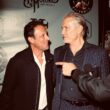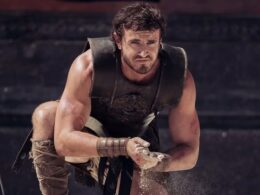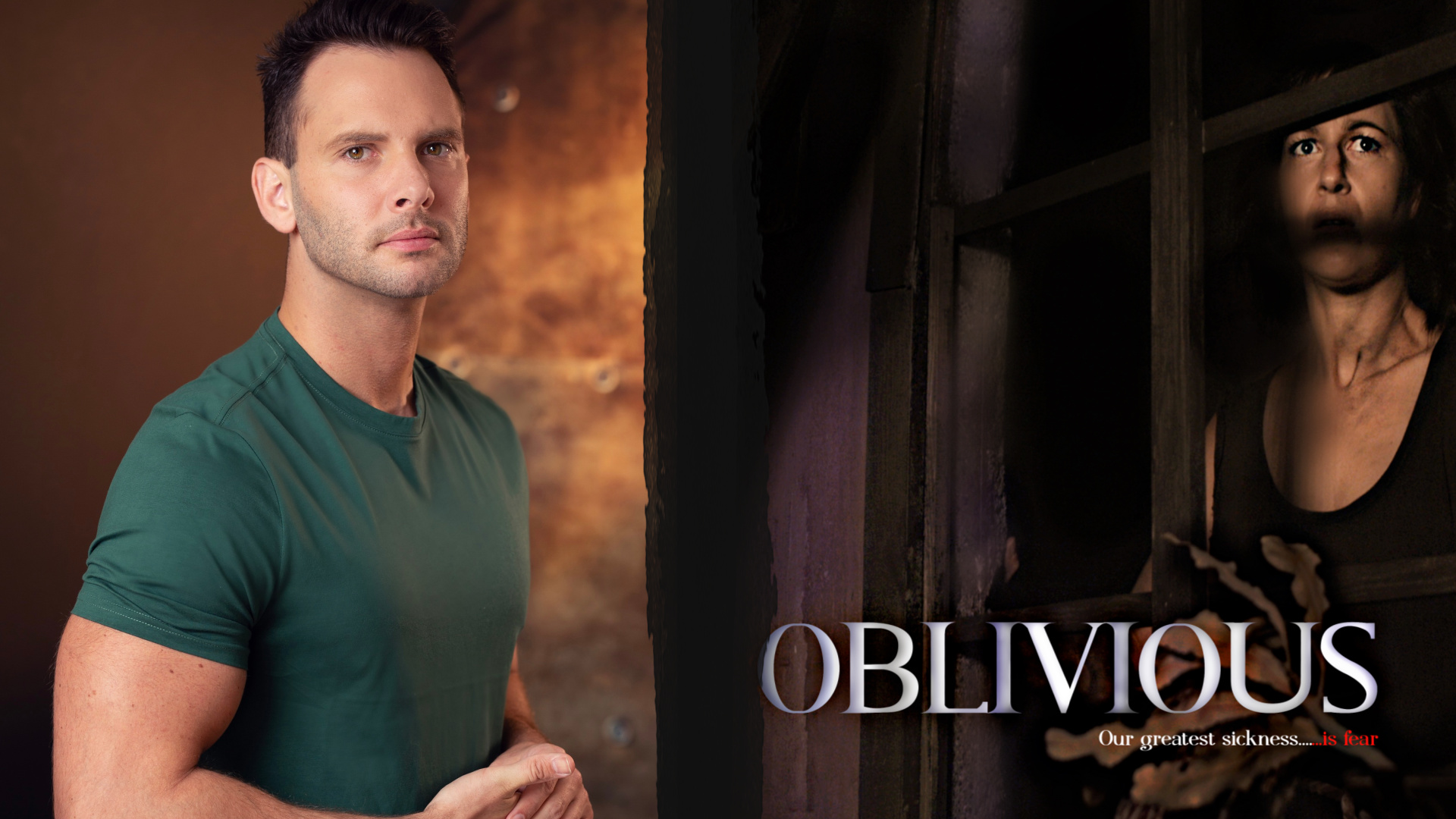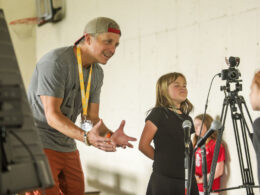On a dimly lit soundstage in Redhook, Omar Nasr peers into a monitor, adjusting a single beam of light so that an actor’s tear glistens like morning dew. Within seconds, he steps back, satisfied. It seems effortless—yet Nasr’s ability to shape emotion through illumination is the culmination of years spent mastering both the art and science of cinematography. Over a career spanning more than 200 projects, Nasr has emerged as one of Hollywood’s most sought-after visual architects, seamlessly navigating between prestigious television series, feature films, music videos, commercials, and documentaries.
Born and raised in Egypt, Nasr gravitated toward movies long before he understood the name “gaffer” or the function of a diffusion frame. Early photography with his father’s film camera sparked a fascination with how light and lens could transform ordinary moments into cinematic poetry. That fascination led him to formal study—an immersion in everything from the chiaroscuro lighting of film noir to the vivid color palettes of contemporary music videos. But it was on set where Nasr’s talent truly came into focus.
Nasr’s reputation first solidified when he joined the lighting departments on award-winning television productions. As an on-set Lighting Technician, he cut his teeth on Orange Is the New Black (Netflix) and New Amsterdam (NBC), absorbing the visual languages of both intimate drama and sprawling ensemble storytelling. Soon, gaffers took notice, enlisting Nasr as a core member on series such as Mare of Easttown (HBO), The Blacklist (NBC), and Tom Clancy’s Jack Ryan (Amazon). Working alongside visionaries like Nigel Bluck (HBO’s Tigertail) and David Stockton (Gotham), Nasr honed a signature style: naturalistic lighting that never feels “lit.”
His capacity to adapt—working equally well under daylight for New Amsterdam or in gritty back alleys for The Punisher—earned Nasr membership in the Egyptian Cinema Syndicate and eligibility for IATSE Local 52. These credentials cemented his standing as a top-tier collaborator, trusted by top cinematographers and gaffers alike.
Feature films soon followed. Nasr’s keen eye for texture and depth made him a prized associate to Oscar-nominated cinematographers like Łukasz Żal (I’m Thinking of Ending Things). On Charlie Kaufman’s I’m Thinking of Ending Things (Netflix), Nasr orchestrated complex lighting setups through vast, memory-like interiors—halls that looped on themselves, walls that seemed both real and surreal. His contributions were important to the film’s dream-logic visual approach, where every reflection and shadow amplifies existential unease.
In You Were Never Really Here (Amazon), winner of Cannes’ Best Screenplay Award, Nasr learned brutal chiaroscuro to underscore Joaquin Phoenix’s haunted detective, working for esteemed gaffer Nina Kuhn and cinematographer Tom Towend. Here, light becomes a character in itself—an interrogation lamp that refuses to blink, streetlights that cast Phoenix’s silhouette as a man chased by his own trauma.
Beyond those high-profile films, Nasr’s work on Tigertail and The Jesus Rolls further demonstrated his range. In each case, Nasr’s guiding principle remained the same: to serve the director’s vision while bringing his own artistry to every frame.
Where Nasr’s talents shine with particular luster is in the world of music videos—a realm where the combination of rapid pacing, bold visuals, and emotional resonance demands an unparalleled command of lighting design. As Chief Lighting Designer on Harry Styles’s “Music for a Sushi Restaurant,” Nasr sculpted a kaleidoscope of hues that danced with the song’s upbeat whimsy—an achievement recognized with Best Music Video and Best Cinematography honors at the 2023 D&AD Awards.
He followed up with atmospheric work on SZA’s “Nobody Gets Me,” a moody interplay of shadows and spotlights that mirrored the song’s introspective heartbreak. Bad Bunny’s “Monaco” called for vibrant burst lighting, capturing the artist’s Caribbean spirit in neon-soaked frames.
Nasr’s resume reads like a who’s who of contemporary pop: Jennifer Lopez’s glossy dance numbers, J Balvin’s color-burst collabs, Ed Sheeran’s earnest close-ups, Lil Uzi Vert’s hyper-stylized world, Sabrina Carpenter’s emotive vignettes, and Rauw Alejandro’s high-octane energy. Each video allowed Nasr to stretch his creative muscles—to go bold with pigment, to refine minimalism in black-and-white, or to conjure surreal dreamscapes through carefully calibrated fixtures. Collectively, these videos have amassed hundreds of millions of views, a testament not only to the artists themselves but to Nasr’s ability to translate their musical vision into unforgettable visual statements.
Commercials often require lightning-fast setups and flawless execution—and Nasr thrives under the pressure. Cinematographers for major brands from Vogue and Valentino to Calvin Klein and Nike have sought his expertise to infuse their campaigns with cinematic gravitas. In an Elf Cosmetics spot starring Jennifer Coolidge, he balanced comedic timing with soft, flattering key lights—letting Coolidge’s expressions pop without sacrificing the ad’s humor.
For Timberland’s 50th-anniversary film featuring Fat Joe, Raekwon, Rakim, and A$AP Ferg, Nasr blended urban grit with celebratory warmth, helping craft a visual rhythm that matched the rap legends’ cadence. He has been the gaffer for Coca-Cola in sunlit exteriors and moody interiors, for Mastercard in precision-lit vignettes, for Zara under diffused softboxes that evoke editorial elegance. His work on Adidas commercials capture athletes mid-stride in stark, high-contrast frames; his McDonald’s and Nestlé ads find humanity in everyday gestures—a mother’s smile, a child’s first bite—through soft highlights and gentle shadows.
This branded work demonstrates Nasr’s conviction that commercial cinematography need not be hollow. “Regardless of the project, it is imperative you work to perfect each frame as much as possible,” he maintains.. His commercials don’t simply sell products; they deliver miniature narratives imbued with emotional clarity.
Nasr’s eye for authenticity carries over into his documentary work. As NY Unit Cinematographer on HBO’s The Beauty of Blackness, he filmed interviews and vérité sequences that earned the Tribeca X Award and a Bronze Clio for Film Over 5 Minutes. He captured the rugged resilience of communities and the quiet dignity of individuals, using handheld setups and natural light to foster intimacy.
His lighting also brought life to Project Lotus (Apple TV) and Planet Sex (Hulu), the latter hosted by Cara Delevingne, guiding audiences through explorations of identity and desire with tactful framing and nuanced illumination. Katrina Babies, nominated for Best Documentary Feature at Tribeca, found Nasr lighting contemporary interviews to match and seamlessly blend with archival material, weaving together past and present in a seamless visual narrative.
Short films, too, benefit from Nasr’s depth of experience. On Charlie Kaufman’s Jackals & Fireflies, worked with award-winning cinematographer Charyse Irvin to conjure eerie atmospheres; on Cookie Heart, winner of Best Cinematography at the New York International Filmmaker Festival, he found magic in small moments—a borrowed light from a bakery window, the glow of streetlamps on damp pavement.
While firmly rooted in Hollywood, Nasr’s influence extends worldwide. His work appears in films showcased at the Thessaloniki Documentary Festival, the African Film Festival, the Art of Brooklyn Film Festival, and the Milan Gold Awards. His cinematography in A Forgotten Past garnered praise at both the African Film Festival and the New York Independent Film Festival.
These international selections reflect Nasr’s belief that visual storytelling transcends borders: a well-lit face, a shadow-cast alley, a silhouette against a sunset—these images speak to universal yearnings.
What unites Nasr’s vast body of work is a philosophy that marries technical precision with artistic empathy. He approaches each project by asking: What emotion does this scene need? What story does this frame tell? Rather than defaulting to “pretty pictures,” he chooses fixtures and angles that underscore character psychology—a warm spotlight to suggest nostalgia, a cold backlight to evoke isolation, a moving practical to mirror a character’s shifting perspective.
He emphasizes collaboration. “A great cinematographer,” he says, “listens first. It’s not about your signature; it’s about elevating every department—production design, wardrobe, performance. To tell the story as well as possible.” On set, Nasr mentors junior lighting technicians and young gaffers, sharing techniques for rigging fixtures in tight spaces or maximizing natural light when budgets tighten, and more importantly, the creative approach to lighting.
As the industry evolves—embracing LED walls, virtual production, and real-time compositing—Nasr remains both curious and discerning. He experiments with LED volumes on cosmetic commercials, while also championing classic methods: hot lights, gels, and flags. He believes that technology must serve storytelling, not supplant it.
Looking ahead, Nasr is poised to step behind the camera as lead cinematographer on a slate of independent features slated for festival runs in 2026. He is also developing a masterclass series on creative lighting, aimed at demystifying complex setups for emerging artists worldwide.
Few practitioners possess the versatility to move effortlessly between prestige television, auteur cinema, pop-culture music videos, and high-end commercials—yet Omar Nasr does so with grace and purpose. His work demonstrates that lighting design is far more than a technical necessity; it is a narrative art form capable of deep emotional resonance.
In every frame he touches, Nasr reminds us that cinema’s true power lies not just in the stories we tell, but in how we choose to see them. As lights dim and the next camera call echoes, audiences everywhere will continue to feel his touch—one meticulously crafted shadow at a time.









